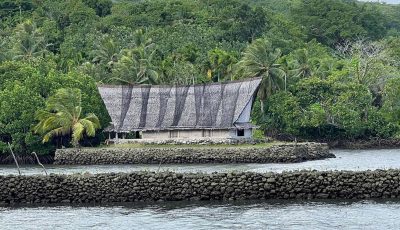Interior provides $409,885 to Guam
WASHINGTON, D.C.—Acting Interior assistant secretary for Insular Areas Nikolao Pula made available $409,885 to preserve natural and cultural resources and protect against invasive species in Guam.
“We are especially pleased that Congress was able to provide some extra funding in [fiscal year] 2017 to mitigate and control the coconut rhinoceros beetle and little fire ant in Guam,” said Pula. “All funding supports Gov. Eddie Calvo’s efforts in protecting Guam’s natural resources now and for the future.”
Guam’s Department of Agriculture will receive $74,516 to start up a training and outreach program for the prevention, control and management of the little fire ant, Wasmannia auropunctata, infestation in Guam.
Funds will provide for equipment and supplies, personnel training, a new website dedicated to LFA control, and workshops to encourage and engage the public in the control and management of this pest.
An LFA infestation was first found at a green-waste site on the northern tip of Guam in 2011, and there are now over 20 widely dispersed infestation sites on the island. Other infestations of the LFA have been found in Hawaii and other islands of Polynesia further south, including Australia.
The LFA has caused ecological disruption in Guam’s forests and other areas in Guam. It is feared that if unchecked, the LFA will cause further disruptions to Guam’s ecosystem and spread to other islands in the Micronesia region.
The University of Guam College of Natural and Applied Sciences will receive $63,816 to purchase supplies and equipment necessary to eradicate the little fire ant from selected forest sites in Guam. Entemologists will also train technical workers to recognize and control LFA infestations.
The University of Guam will also receive $176,553 to fund a post-doctoral entomologist for two years and supplement existing work to administer the biological control agent of choice against the coconut rhinoceros beetle. This has typically reduced damage by up to 90 percent with population suppression lasting indefinitely.
The beetle has been killing coconut trees in Guam and Palau. Ideal beetle breeding sites are in decaying vegetation, often left in the wake of tropical storms and typhoons. Without significant suppression, it is believed both Guam and Palau will lose most of their coconut trees and that it will only be a matter of time before other islands in Micronesia are invaded.
These three initiatives support efforts to control the coconut rhinoceros beetle and the little fire ant and align with the 2015 biosecurity plan for Hawaii and Micronesia.
These two invasive species pose significant challenges to regional ecosystems and present both health and economic risks to communities in the Pacific. These specific initiatives were able to be funded because a one-time appropriation add-on of $250,000 made available by the U.S. Congress in the FY 2017 budget toward these eradication efforts and to augment capacity building within the insular areas in the management of natural and cultural resources. At the 22nd Micronesian Islands Forum in May 2017, island leaders, including Guam Gov. Eddie Calvo, identified invasive species and specifically the Coconut Rhinoceros Beetle, as one of the most important threats to island communities, economics, environments and human health.
Guam’s Bureau of Statistics and Plans will receive $95,000 for a variety of projects. (DOI)



























